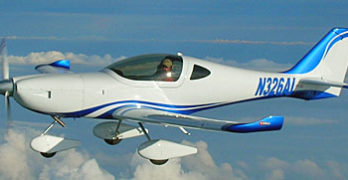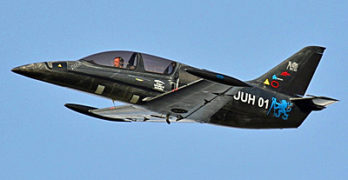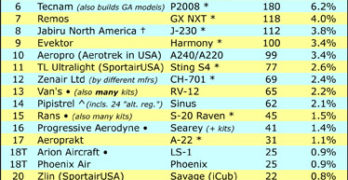On a conference call with aviation media, Icon Aircraft sought to mitigate blowback from the 40-page contract announced just before Sun ‘n Fun 2016. Plenty of people took them to task and several position holders reported dissatisfaction with some of the more burdensome aspects of the lengthy legal document.
“We [messed] that up,” CEO Kirk Hawkins told me at Aero 2016, adding that they would take action on it quickly. Since his comment in late April, the purchase agreement, meant to protect the company’s brand, intellectual property, and legal liability, was heavily revised. Cut from 40 to 11 pages, the new agreement removes a 30-year life limit on the airframe. Neither will Icon install cockpit audio and video recorders. Numerous other changes should encourage position holders to sign the dotted line.
Several aviation news outlets have faulted the company for continuing to take orders while production appeared stalled, for issuing a contract no one could love except lawyers, and for tightly controlling the journalist flight experience.
Search Results for : MG 21
Not finding exactly what you expected? Try our advanced search option.
Select a manufacturer to go straight to all our content about that manufacturer.
Select an aircraft model to go straight to all our content about that model.
Sun Catches Lightning – Sun Flyer Rollout
Recently, aviation titles chronicled the rollout of Sun Flyer’s prototype electric powered airplane. To careful observers, the aircraft might appear somewhat familiar. Good eyes, folks. The prototype was built for Aero Electric Aircraft Corporation by Arion Aircraft. The beautiful sweeping lines of the Sun Flyer are nearly identical to the Lightning LS-1.
The one notable difference — and in fact this is the whole story — is the electric motor up front allowing Sun Flyer to look even a bit more streamlined than the dashing outline of Lightning. This is a first article aircraft as photos don’t yet show any solar cells on the wings, as promised by Aero Electric.
Regardless of how AEAC develops Sun Flyer down the line, it was wonderful to see them linking up with Arion Aircraft whose LSA and kit models have been admired for their gracefully smooth shape for some years.
Invasion of the Titan; More LSA Go Big Power
In my many years in aviation, I’ve learned this about light aviation pilots: If 80-horsepower is good, then 100-horsepower is better, and even more is best of all. It explains why interest was so high when Rotax announced their new 915iS that will provide 135 horsepower. It also illustrates why the 180 horses of the Titan X-340 is succeeding in the Light-Sport Industry.
Interest from LSA producers started with CubCrafters adopting the engine several years ago. When that company’s boss, Jim Richmond, held a press conference at Sun ‘n Fun, the reception was somewhat cool. Of ten persons in the audience, only four of us were journalists. The other six (yes, 6!) people were from FAA. No wonder, perhaps, as ASTM standards at the time brought questions to mind regarding the use of such a powerful engine. Those standards have since been modified somewhat.
Indeed, the western producer instructed users that the engine could only be used at full power for takeoff or climbing, but otherwise had to be set to lower power.
Remos is Back and Scores at Aero 2016
Think back far enough in the still-fairly-new LSA sector and you should recall a time when one brand made some major impact on all of personal aviation. The company was Remos and their U.S. team amped up promotional activity to the level of full page ads in most of the biggest aviation magazines in aviation. By my casual estimate, Remos was spending north of $35,000 per month on splashy advertisements.
Remos also did an airplane giveaway with AOPA; the company was a seemingly unstoppable juggernaut. Prudent or not, you had to admire that the company pulled out the stops in an effort to become the main LSA brand. Such a no-holds-barred approach has worked for products in other industries. However…
Then the door of opportunity slammed shut. It was not that the advertising didn’t work. Certainly it did make the brand well recognized. However, by 2009 the global economy was in a tailspin.
Parachute Collides with Cessna Close to Ground
Here’s a fitting story for the weekend. I have more airplane news for next week, but this… well… what a time to be standing somewhere with your camera at the ready.
The story isn’t new. The article with accompanying video was posted March 8, 2014, but the photos only recently came to my attention thanks to a family member who knows how I follow aviation and knows of my background at BRS parachutes. (Thanks, Earl!)
The story was broken by Fox 13 TV in Tampa Bay, Florida. The “witness” referred to in the Fox 13 video story was Tim Telford who captured the shots that I assembled into a short movie below. I certainly marveled at the images he captured. These 18 images represent only a brief moment in time.
The rest of the story that follows comes from the Fox 13 reporter, Aaron Mesmer. You can read it all and see their video here.
You Wanna Be a Jet Pilot? Check out UL-39
When they introduced Light-Sport Aircraft FAA prohibited use of a jet engine. Looking at the photos nearby you can see that this airplane cannot pass must as a LSA. Or, wait! That’s no jet. It just pretended to be one at Aero Friedrichshafen 2016.
At my home airport (Spruce Creek Fly-in), I regularly see one or another full-size L-39 in various stages of being prepared for a new American owner. I was told that about 200 of these ex-Czech military jets are operating in the U.S. They are handsome, sleek, and fast-like-a-jet. Contrarily, the UL-39 is not as fast but neither should its cost of upkeep be anything close to a military jet.
We’re getting a bit ahead of ourselves. The UL-39 on display was a wonderful proof-of-concept aircraft that managed to engage nearly a generation of students in aeronautical engineering disciplines at the Czech Technical University in Prague.
The “Showcase” is On in DeLand this November
What’s in a name for an airshow? Quick, what’s the official name of the big July show north of Chicago? “Oshkosh?” Yes, to most, but the association prefers EAA AirVenture Oshkosh. How about the one in Lakeland, Florida? “Oh, you mean Sun ‘n Fun.” The full name is Sun ‘n Fun International Fly-In and Expo. Have you ever heard anyone say the whole thing? Another mouthful is Sebring U.S. Sport Aviation Expo, but it gets shortened various ways.
At Sun ‘n Fun 2016 DeLand airport Manager John Eiff and recently hired Sport Aviation Administrator Jana Filip held a name-that-show contest. More than 30 entries were received. “Some were very clever and witty like DeLand, DePlanes, DeShow,” said Jana. In the end, the winning word was “Showcase,” offered by veteran Paradise City Commentator, Michael McClellan.
Why Showcase? “Because that’s what the event will be — a showcase for airplanes and aviation stuff,” McClellan said.
My 4 Favorite Aircraft Seen at Aero 2016
I always love traveling to Aero Friedrichshafen because of the new aircraft I will see. We media types live for the new stuff (because it’s what we believe our readers or video watchers want to consume). I made my last dash through the hall on Saturday — Aero ran from April 20-23, 2016 — and I am now in Zurich, Switzerland awaiting my flight back to the USA.
I saw many aircraft worthy of closer examination. I will prepare articles on those and more detail about the ones below, too. Later on, some of my Aero videos will hit YouTube after some editing. While the memories are fresh, though, I want to give an early peek at four aircraft that grabbed my attention …and that of many others, judging from the challenge to get near them during opening hours. I present these in no particular order.
Zlin Savage Shock — Shock definitely created awe at Aero.
SLSA Market Shares Report & Commentary for 2015
Article Updated 8/8/16 — The second chart appearing below for Calendar 2015 results had errors in the spreadsheet formula. They have been corrected below. —DJ
My associate in Europe, Jan Fridrich of LAMA Europe, has been the source for a database search for many years as I seek to report market share statistics in the USA. He scours the FAA registration information and laboriously assembles the numbers. As he and I work to produce accurate info, Jan often makes contact with selected companies when questions arise, as they often do. I also reach out to producers in our effort to make the best possible use of the registration data to create our rankings.
Jan has been one of his country’s representatives in the Czech Republic’s official work with the Chinese to help that nation build its lighter aviation infrastructure. He’s made many trips to China in the last two years.
Early Preview of Aero Freidrichshafen 2016
The great show of Europe called Aero Friedrichshafen is about to begin. It starts officially tomorrow and runs through Saturday (April 20-23, 2016). I’ve lost count, but believe this is my 20th year of attending, far more than any other European show. As he worked to help exhibitors and manage the million details of his event, boss Roland Bosch said the event started in 1977, meaning next year would be its 40th, but… Aero alternated years from 1977 through 1991 (as do many European airshows). With the 1993 event it went annual, meaning this is the 31st Aero.
On Monday, the vast 11 halls of the Messe (the facility name) were largely empty but slowly becoming populated with airplanes. In all of the gymnasium-sized halls with their elegant curved wood roofs, workers assembled displays. In Halls B1, B2, and B3 — where the light aircraft I follow are concentrated — displays are more elaborate than anything we typically see at U.S.
- « Previous Page
- 1
- …
- 52
- 53
- 54
- 55
- 56
- …
- 94
- Next Page »











